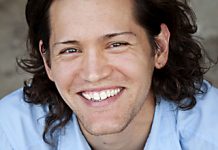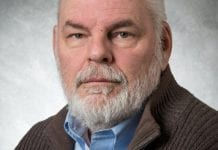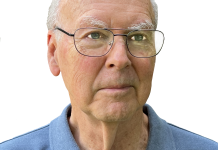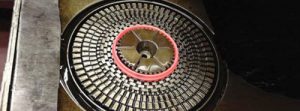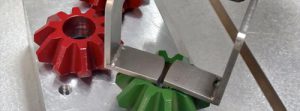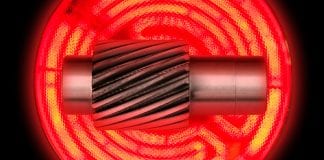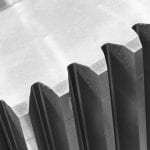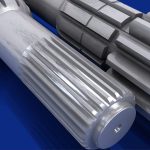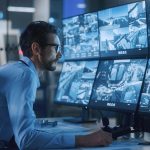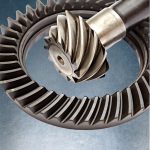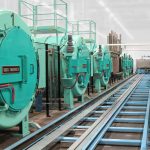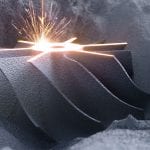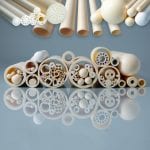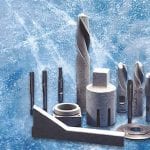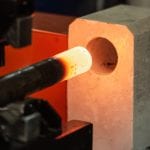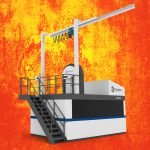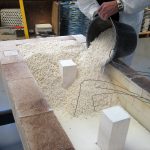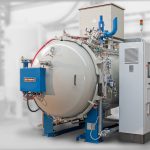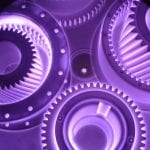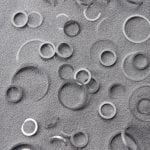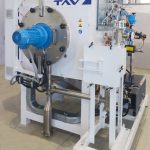Improved Materials and Enhanced Fatigue Resistance for Gear Components
For decades, the gear industry has addressed the challenge to produce high-performance components in a cost-effective manner. To meet design intent, vehicle transmission components...
Stress Generation in an Axle Shaft during Induction Hardening
Introduction
Induction hardening of steel components offers a fast heating rate, high efficiency, and the ability to heat locally. Induction hardening is a highly nonlinear...
Balancing a plant security profile
In today’s technology-driven world, where cyber threats dominate headlines and organizations invest significant resources in safeguarding their OT and IT infrastructure from digital threat...
The effect of surface carbon content on the performance of carburized steels
Carburizing is typically done with a target of 0.80-0.90% carbon at the surface of the part. What is the effect if the carbon level...
Nitrocarburizing Gears Using the ZeroFlow Method in Large-Volume Production
Retort-based nitriding and ferritic nitrocarburizing have been around a long time. Modern day challenges include providing known, repeatable hardness and surface case structures with...
Heat Treatments and Critical Quenching Rates in Additively Manufactured Al–Si–Mg Alloys
Laser powder-bed fusion (LPBF) has significantly gained in importance and has become one of the major fabrication techniques within metal additive manufacturing. The fast...
Heat work to the fore
Sporting its new tagline — Enabling a Clean, Efficient & Electrified Future — the highly regarded Ceramics Expo will once again head for Cleveland’s...
Freezing Out the Competition
Most companies are looking for a secret that can help them keep a step ahead of the competition — a little edge to run...
Process control, monitoring, and quality assurance specifics for induction heating
Controlling the induction-hardening process is a demanding application compared to most other thermal processes. The first and foremost requirement is to precisely control the...
The next level of hot isostatic pressing
Over recent years, the development of in-HIP heat treatment (High Pressure Heat Treatment) has led to some interesting developments, which are now changing the...
Producing Quality Parts in an Atmosphere Furnace: How to Optimize Your Quenching and...
Throughout the manufacturing process, heat treatment is consistently viewed as a critical step for adding value to the parts produced. A part expensively manufactured...
The cutting edge of thermal processing in a forge environment
Scot Forge is a 128-year-old, 100-percent employee-owned forging company that works in multiple markets from large defense, aerospace, power generation and mining projects to...
Carbon-neutral insulation for high-temperature applications
In January 2022, Mantec Technical Ceramics, based in Stoke-on-Trent, U.K., launched carbon neutral versions of its super-insulative Ultralite material, and this has been met...
Recent Inventions and Innovations in Induction Hardening of Gears and Gear-like Components
This paper focuses on recent inventions and innovations (from the past four-six years) in induction hardening of gears and gear-like components, including, but not...
Case study: Partnering with the medical industry
The high-tech medical industry is one of the most demanding in terms of standards, procedures, and technical parameters that must be met by the...
Investigations on the tooth root bending strength of larger-sized, induction-hardened gears
Surface hardening is an economical and technological alternative to case hardening. This is especially true for larger-sized gears. Due to the necessary high case-hardening...
Spectroscopic study of plasma nitrocarburizing processes with an industrial-scale carbon active screen
The active screen plasma nitrocarburizing technology is an improvement of conventional plasma nitrocarburizing by providing a homogeneous temperature distribution within the workload and reducing...
Energy and material efficiency of steel powder metallurgy
Concern about global warming motivates the reduction of greenhouse gas emissions from manufacturing, but the environmental impact of the whole powder metallurgy production chain...
Infrared Temperature Measurement Theory and Application
An infrared thermometer measures temperature by detecting the infrared energy emitted by all materials at temperatures above absolute zero, (zero degrees Kelvin). The most...
Exploring the impact of thermal conductivity in material choice
By understanding the fundamentals of thermal conductivity, one can appreciate how it influences material selection for thermal management, affects the performance in different environments,...
Understanding pyrometry technology is key to proper use
I teach pyrometry courses throughout the year and, when I do, I include a thermocouple tutorial video from YouTube. In this video the function...
Effect of heat-treatment conditions on the mechanical properties and machinability of Ti15SnxCu alloys
In the current work, the microstructure, mechanical properties and machinability of Ti15SnxCu alloys (x = 0 to 2 wt. %) were investigated. The alloy...
Reducing measurement error when making thermocouple transmitter connections
The thermocouple (TC) is a thermo-electric device used to measure temperature and nearly two-thirds of U.S. temperature measurement makes use of thermocouples. Most industrial...
How to properly debind parts produced by metal AM
Additive manufacturing is a manufacturing technology that is gaining more and more ground among metallurgists. The process involves all the techniques used to create...
Women in manufacturing: Diversifying the industry
You don’t have to go very far back in time to find a point where the role of women in the manufacturing sector was...
Reliable Vacuum Supply for Plasma Nitriding
Plasma nitriding is becoming more and more important for heat treatment.
The subtleties of induction processing
Inductoheat was recently asked to conduct three technical video seminars on modern induction thermal technologies for automotive industry:
• The first seminar was April...
Can sub-zero treatment at minus-75°C bring any benefits to tool manufacturing?
Vanadis 6 ledeburitic tool steel was subjected to sub-zero treatment at minus-75°C for different durations and for different subsequent tempering regimes. The impact of...
Potential of nitrogen atomized alloy 625 in the powder bed fusion laser beam process
Powder-based metal additive manufacturing processes like powder bed fusion — laser beam use gas-atomized metal powders as feedstock material. Typically, for nickel-based alloys such...
Induction heating in the medical device manufacturing industry
Induction heating is a process that uses electromagnetic fields to heat electrically conductive materials. An induction heating system includes a power supply that converts...
Selecting the correct industrial ovens for finishing applications
Finishing is defined as “completing the manufacture or decoration of a material or product by giving it an attractive surface appearance.” In industrial applications,...
Carburizing and Nitriding Treatment Modeling
(Photo courtesy of Advanced Heat Treat Corp.)
Carburizing and nitriding treatments have the same goal: increase hardness on the surface while keeping the core ductility....
Plasma nitriding as a low-nitriding potential process
Plasma/ion nitriding is a process that can be easily applied to various high-alloy steels. Some of these steels — for example M-2, S-7, D-2,...
Gas carburization techniques
A comparison of conventional and accelerated methods for surface hardening
How to unlock time and profit savings with data
In the highly specialized world of commercial heat treating, precision, efficiency, and data-driven decision-making are critical for success. Capturing and using accurate data can...
Case Hardening Basics: Nitrocarburizing vs. Carbonitriding
Confusion surrounding the case-hardening techniques of nitrocarburizing and carbonitriding prove the point that it's easy to get lost in the nomenclature behind heat-treating processes.
That...
Integrating 3D printing into prototyping and production scenarios
At the recent TCT 3Sixty event in Birmingham, England, 3DPRINTUK ran a competition offering vouchers to be used against the cost of future 3D...
Filament-Wound Composites Have Specialized Curing Requirements
Filament winding is a manufacturing method for making tubular and cylindrical shapes of extreme strength and light weight. The technology involves wrapping a mandrel...
Use of plasma nitriding to improve the wear and corrosion resistance of 18Ni‑300 maraging...
Selective laser melting (SLM) is one of the most promising additive-manufacturing (AM) technologies . It is a powder-bed fusion process, where a high-power laser...
Heat Treating Education
In a recent paper by Janusz Kowalewski of Ipsen at the 3rd International Conference on Heat Treatment and Surface Engineering in Automotive Applications held...



